Red Power
Red Power, a concept that emerged in the 1960s, describes the rise of a shared awareness among the Indigenous peoples of Turtle Island of their unique rights and identities.1 Red Power was a wave of momentum that pushed existing struggles of Indigenous resistance to the forefront. This momentum was created during an era of anti-war […]
Charges denied

In this letter, Gerry Larkin responds to critiques of NARP by Chief John George. She clarifies the purpose of NARP and asserts the importance of political change that questions the legitimacy of ‘old leaders’. Citation: Vancouver Sun (April 2, 1968). Charges denied. Pg 5. Found in https://www.proquest.com/hnpvancouversun/docview/2240399412/3233CCFFFEB84FC6PQ/128?accountid=13800&sourcetype=Historical%20Newspapers Leave a comment Cancel reply Logged in as […]
Indian official decries Red Power movement
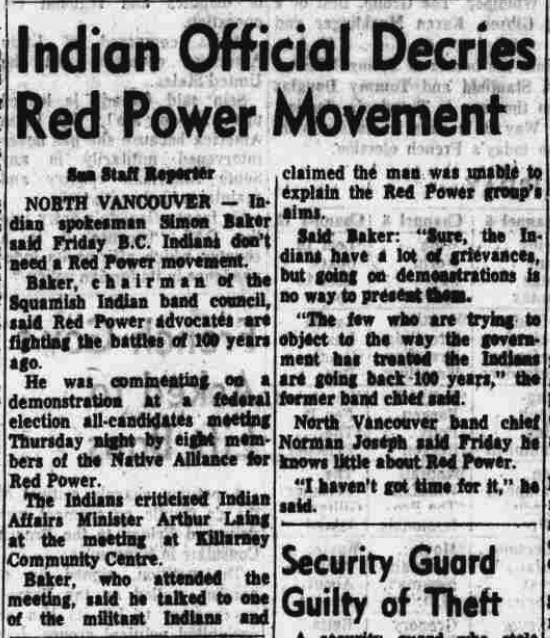
This article provides a critique of the Native Alliance for Red Power (NARP). It quotes Smin Baker, Chairman of the Squamish Band. Additionally, it provides details about a demonstration where eight NARP members protested the Federal all-candidates meeting. Citation: Vancouver Sun (June 22, 1968). Indian official decries Red Power movement. Pg 67. Vancouver, BC, Canada. […]
Crisis and resolution for B.C Indians
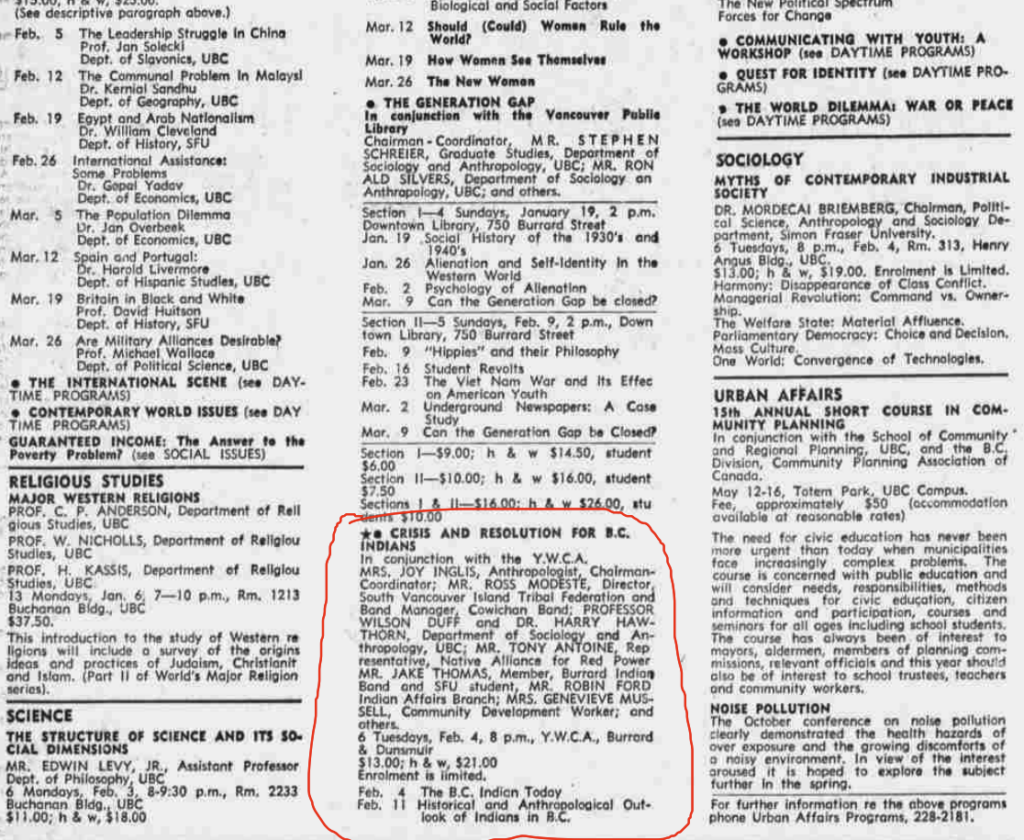
This ad promotes a series of talks titled ‘Crisis and Resolution for BC Indians’. Tony Antoine organized and spoke at the event as a representative of the Native Alliance for Red Power. Citation: Vancouver Sun (January 4, 1969). Crisis and resolution for B.C Indians. Pg 11. Vancouver, BC, Canada. Found in https://www.proquest.com/hnpvancouversun/docview/2240355845/E204839505D45D0PQ/48?accountid=13800&sourcetype=Historical%20Newspapers Leave a comment […]
Band Chief slams ‘Red Power’ group
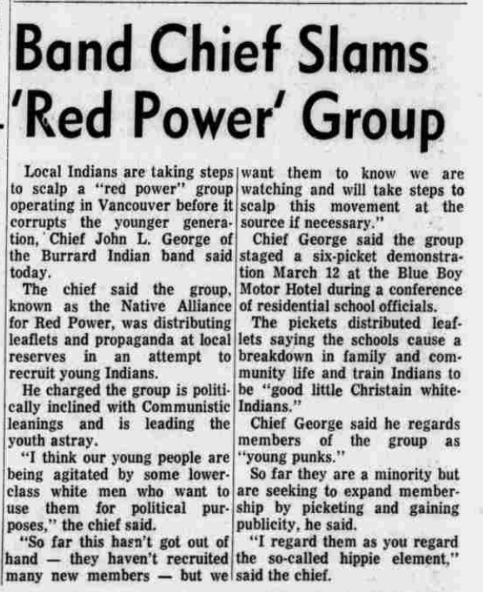
This article is a critique of a protest hosted by the Native Alliance for Red Power at a meeting for residential school officials. Includes critiques from Chief John L. George of the Tsleil-Waututh Nation. Citation: Vancouver Sun (March 21, 1968). Band Chief slams ‘Red Power’ group. Pg 37. Vancouver, BC, Canada. Found in https://www.proquest.com/hnpvancouversun/docview/2240377199/E204839505D45D0PQ/45?accountid=13800&sourcetype=Historical%20Newspapers Leave […]
Indians condem ‘Red Power’ group
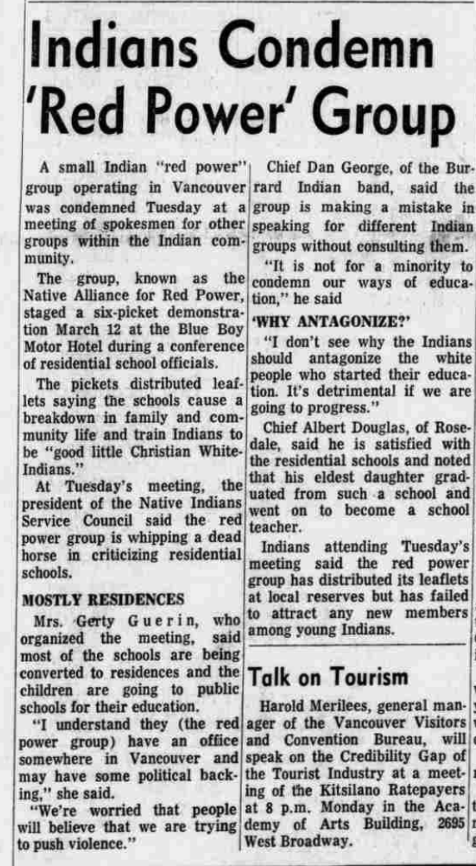
This article outlines criticism of a protest held by the Native Alliance for Red Power against a meeting of residential school officials It includes criticisms from Chief Dan George of the Tsleil-Waututh Nation and Chief Albert Douglas of the Cheam Nation. Citation: Vancouver Sun (March 20, 1968). Indians condem ‘Red Power’ group. Pg 37. Vancouver, […]
Racism on juries charged
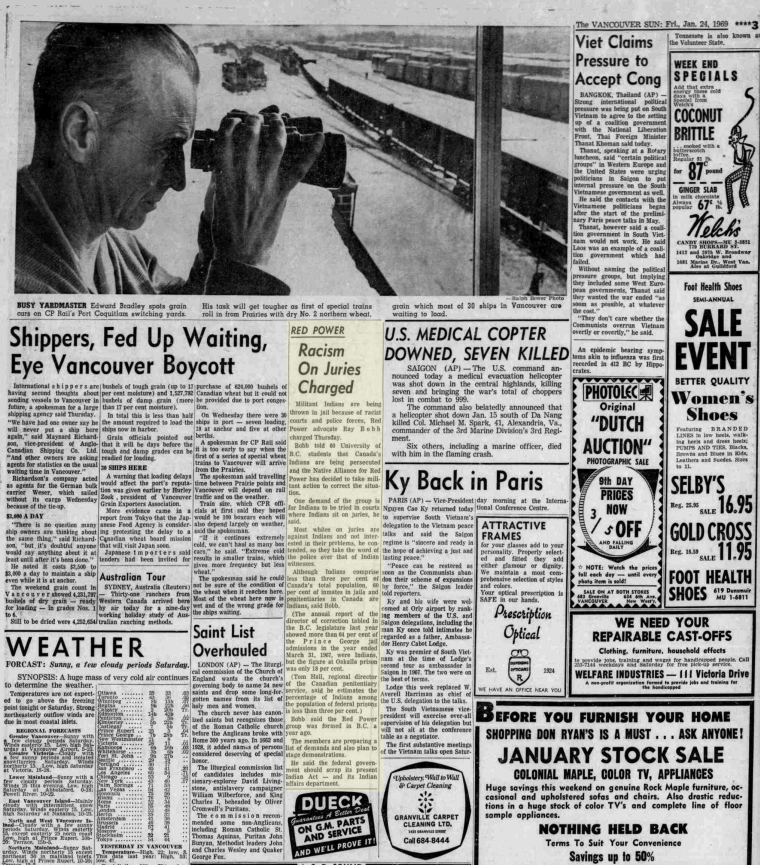
This article is about a call for change from Native Alliance for Red Power (NARP) member Ray Bobb, who advocates for Indigenous peoples to be tried by all-Indigenous juror. The article uses racist language, dismissing the overrepresentation of Indigenous peoples in prison. NARP warns of escalated actions if demands such as this one are not […]
Kindness kills Indian

This article is about a conference at York University about ‘the Canadian Indian’ where Native Alliance for Red Power member Tony Anoine discusses the profound impact of cultural genocide. Citation: Vancouver Sun (October 26, 1968). Kindness kills Indian. Pg 13. Vancouver, BC, Canada. Found in https://www.proquest.com/hnpvancouversun/docview/2240793345/E204839505D45D0PQ/40?accountid=13800&sourcetype=Historical%20Newspapers Leave a comment Cancel reply Logged in as Jacquelyn. […]
Dr King’s death in vain, says professor at UBC
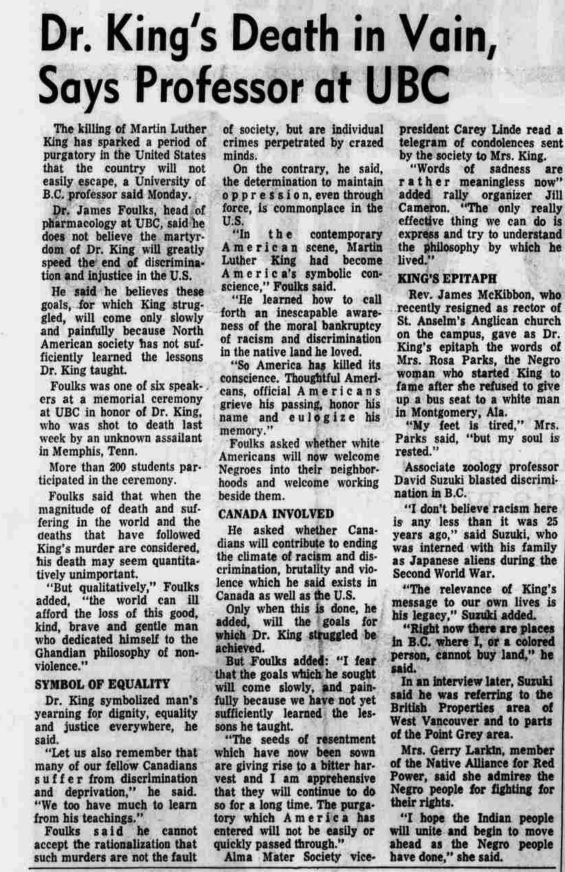
This article is about the murder of Dr. Martin Luther King. It concludes with a quote from Native Alliance for Red Power member Gerri Larkin, who expresses hope that Indigenous people will be inspired by the resilience of Black people and rise up to assert their rights. Citation: Vancouver Sun (April 9, 1968). Dr King’s […]
Indians hit ‘treaty violations’

This article is about a demonstration held in solidarity with a Mohawk blockade at Cornwall, Ontario for recognition of the Jay Treaty. The Jay Treaty outlines that Indigenous people can cross freely from Canada into the USA. Ten members of the Native Alliance for Red Power attended this event, showcasing that Indigenous activism involves transnational […]
